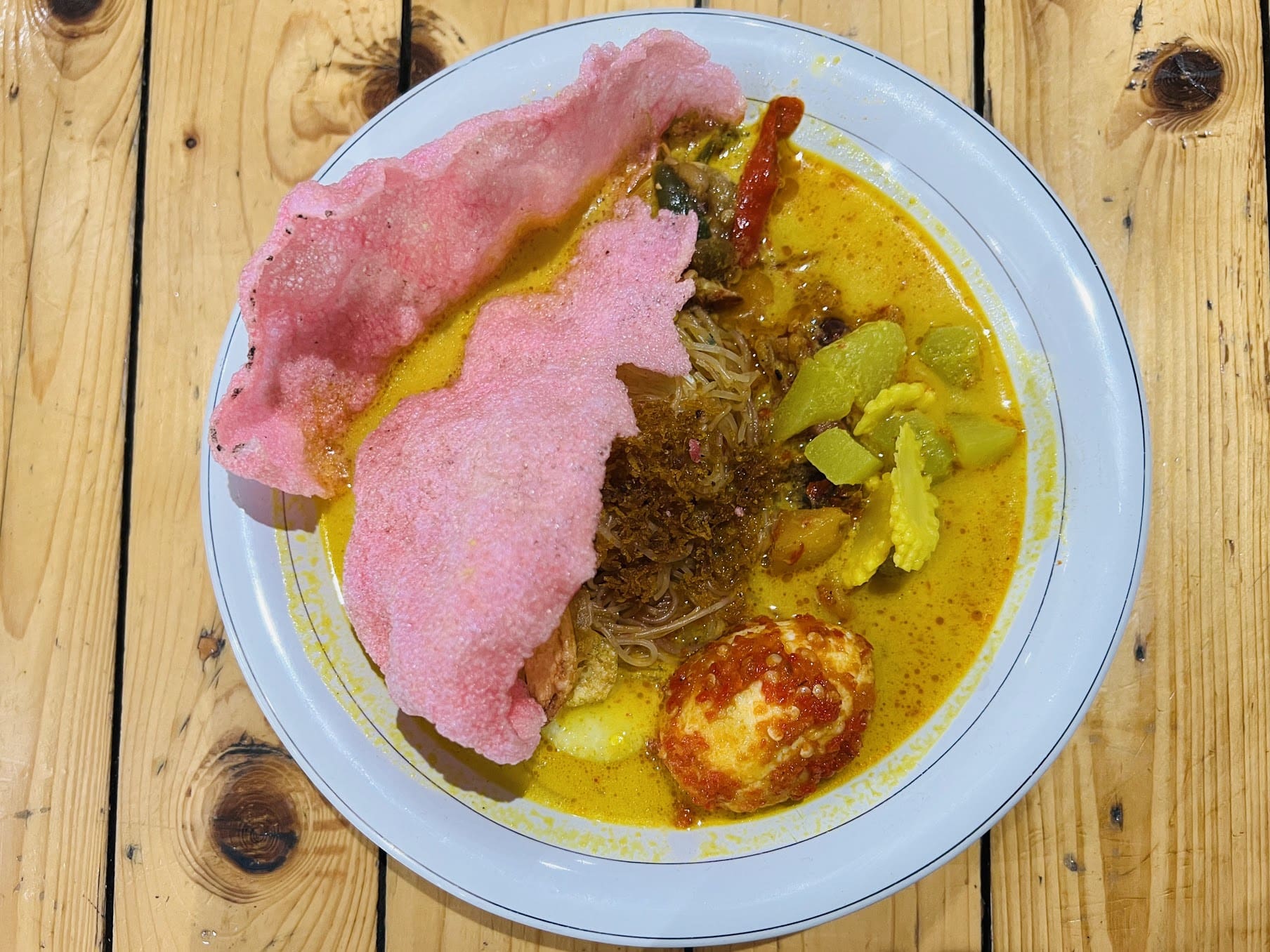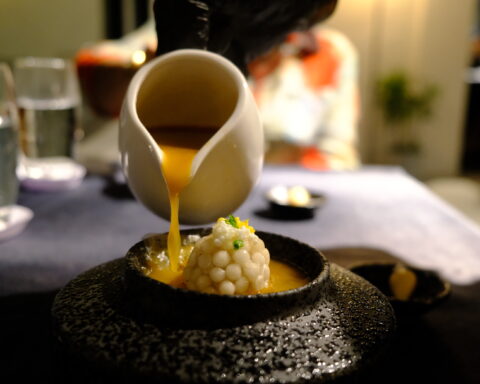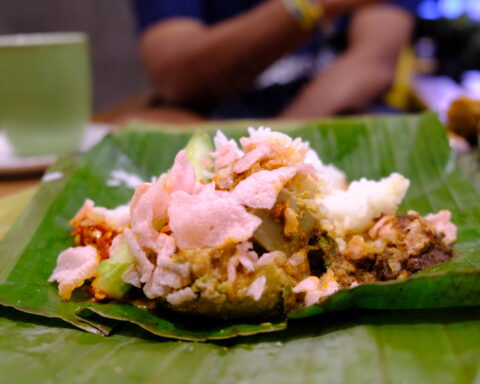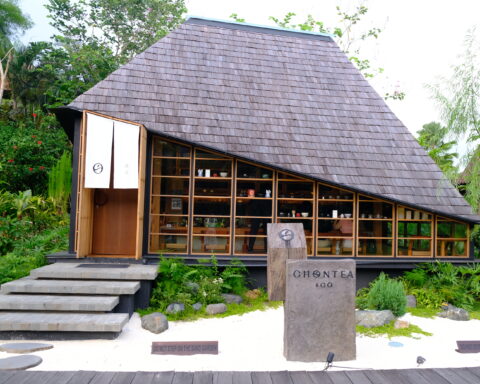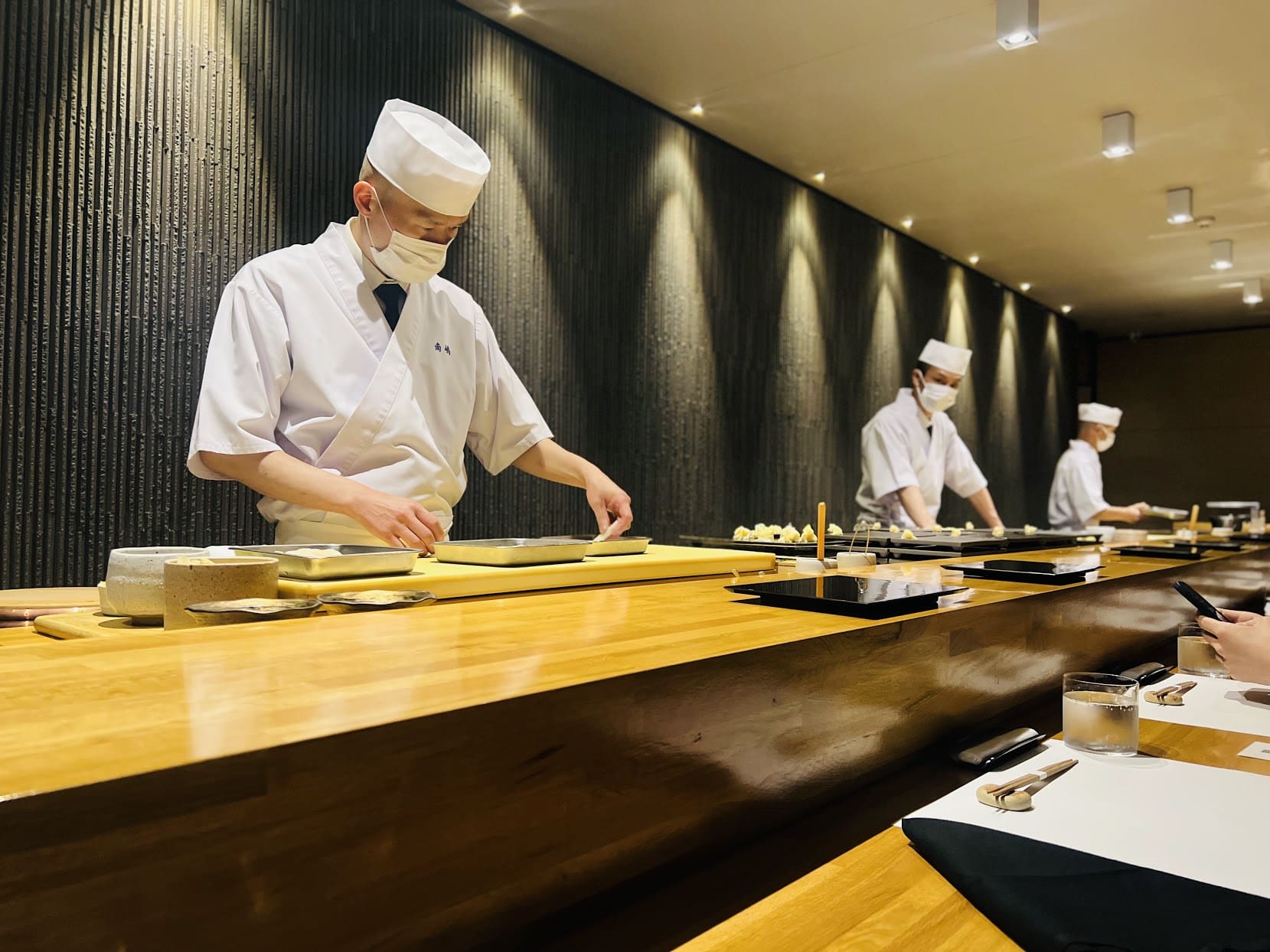It has been a hot minute since I posted anything project-rice-related – so today, let me introduce you to Lontong.
Lontong, essentially, is a compact rice cake. That’s it. It is also one of the base dishes so well-loved in Indonesian food culture that it’s common to refer to the many dishes, including lontong, as just Lontong.
It is usually cut into centimetre pieces and served on a deep plate together with many other accompanying food items, from vegetables to meat. It can then be served dry with a drizzle of a generous amount of peanut-based sauce or, my preference, submerged in coconut milk-based soup—the hotter and spicier the soup, the better.
Outside of home-cooked meals, I ate Lontong the most frequently during my stay in Jakarta early this year, which made Amma raise her eyebrow since I used to hate it (I used to be very picky about my white rice. I liked the cooked rice just as is, not watered down as porridge nor compressed as Lontong – but as the saying goes, the distance makes the taste bud wander).
Lontong in Indonesian Culture
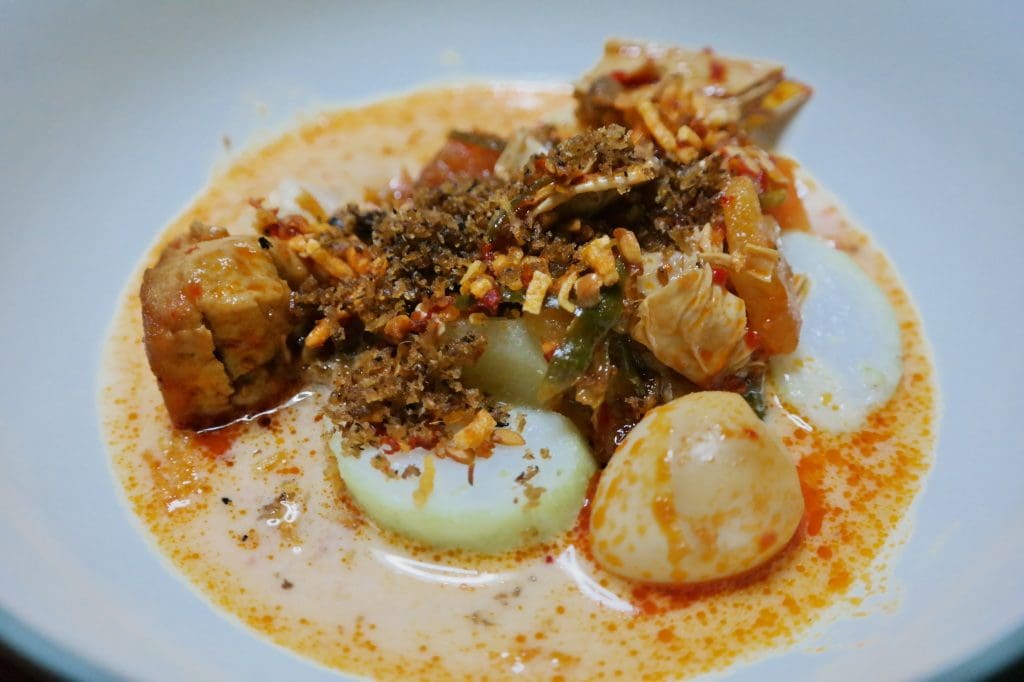
First thing first, it’s also another Indonesian dish whose origin story Malaysia has tried to claim, but we all know that it’s not true as Lontong is authentically Indonesian.
Lontong is eaten at any time of the day, from breakfast to supper. In my home, though, we mostly eat it during breakfast. Lontong is also an essential celebration dish in Indonesian culture. You will find it on the menu for a wedding, Ramadan and everything in between, including Diwali.
Lontong is also an icon of the Eid celebration in Indonesia. You can easily spot Ketupat (Lontong packed into a woven palm leaf pouch) almost everywhere, from the greeting cards to the gigantic (empty) ones in the malls. It’s something we Indonesian are so proud of that we even have ketupat-making classes, though it’s usually targeted at foreigners.
There are many types of Lontong dish. The most well-known is that lontong served as a part of the world-renowned Gado Gado. Other famous ones are Lontong Cap Go Meh, Lontong Medan and Lontong Sayur Padang. Lontong Cap Go Meh is the traditional lontong dish made with a Chinese interpretation – attune to the Peranakan style. Then there is Lontong Sayur Padang, which offers a thicker and richer gravy called Gulai, originating from Padang, West Sumatera. My favourite variant of the dish also comes from Sumatra, the North part, called Lontong Sayur Medan, which also has a more decadent gravy but is not as thick and comes with spicy soy-glazed fried tempeh, clam skewers and red crackers.
The best Lontong I had ever eaten was the one served by my Medan-born aunty at her house for Diwali. It was exquisite.
The second best is at Warung Makan 701, Bendungan Hillir, Central Jakarta.
Same Dish Different Cultures
I struggle to find the Lontong equivalent in other food cultures. Regarding versatility, I’d say it is similar to Korean tteok. Meanwhile, taste-wise, I guess it is comparable with Malaysian Laksa as both are coconut soup based, though Laksa’s base is thick rice noodles instead of rice cake. Also, I despise Laksa.
Follow me on Instagram@KultureKween for more recent updates.
